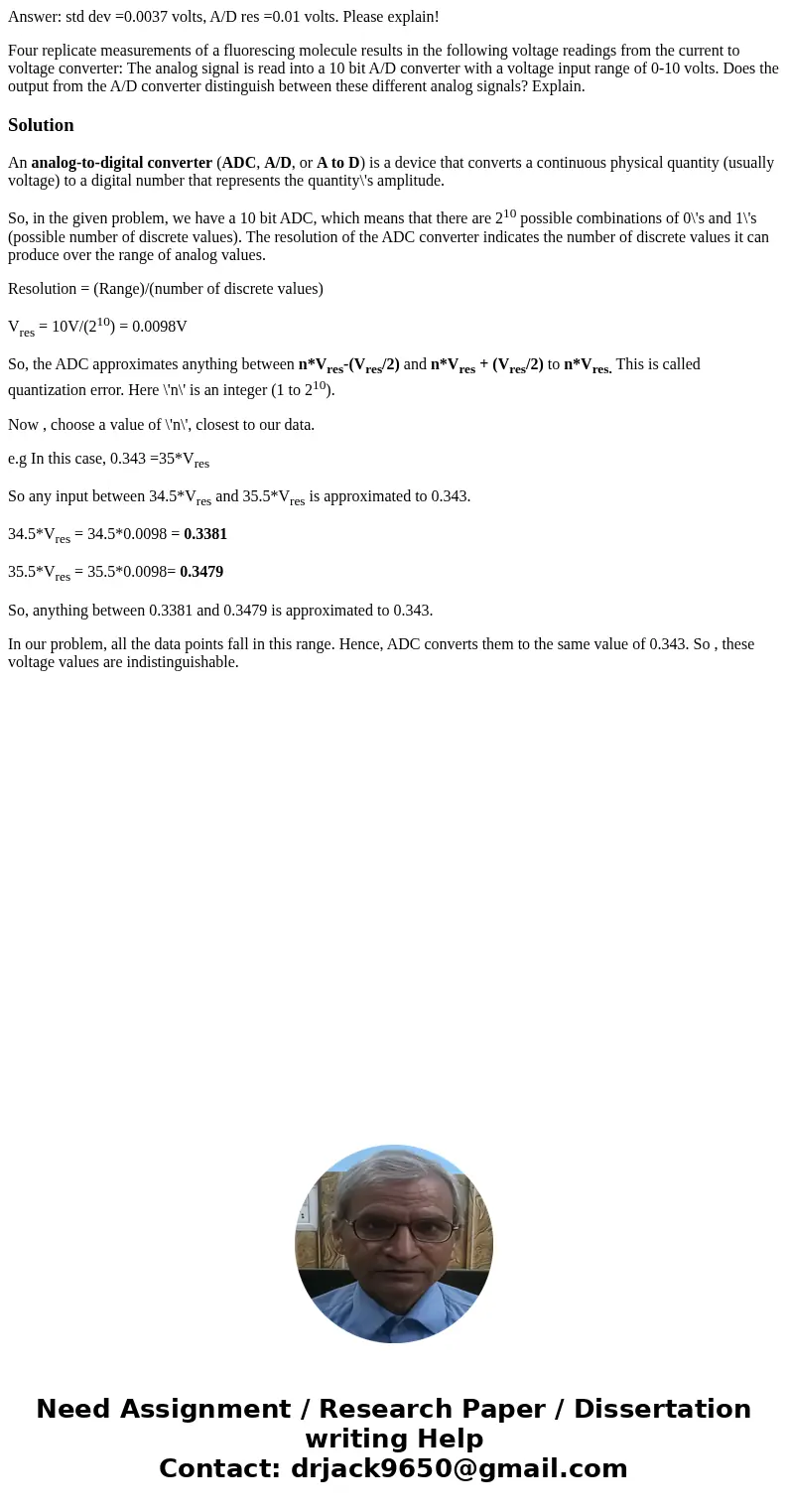Answer std dev 00037 volts AD res 001 volts Please explain F
Answer: std dev =0.0037 volts, A/D res =0.01 volts. Please explain!
Four replicate measurements of a fluorescing molecule results in the following voltage readings from the current to voltage converter: The analog signal is read into a 10 bit A/D converter with a voltage input range of 0-10 volts. Does the output from the A/D converter distinguish between these different analog signals? Explain.Solution
An analog-to-digital converter (ADC, A/D, or A to D) is a device that converts a continuous physical quantity (usually voltage) to a digital number that represents the quantity\'s amplitude.
So, in the given problem, we have a 10 bit ADC, which means that there are 210 possible combinations of 0\'s and 1\'s (possible number of discrete values). The resolution of the ADC converter indicates the number of discrete values it can produce over the range of analog values.
Resolution = (Range)/(number of discrete values)
Vres = 10V/(210) = 0.0098V
So, the ADC approximates anything between n*Vres-(Vres/2) and n*Vres + (Vres/2) to n*Vres. This is called quantization error. Here \'n\' is an integer (1 to 210).
Now , choose a value of \'n\', closest to our data.
e.g In this case, 0.343 =35*Vres
So any input between 34.5*Vres and 35.5*Vres is approximated to 0.343.
34.5*Vres = 34.5*0.0098 = 0.3381
35.5*Vres = 35.5*0.0098= 0.3479
So, anything between 0.3381 and 0.3479 is approximated to 0.343.
In our problem, all the data points fall in this range. Hence, ADC converts them to the same value of 0.343. So , these voltage values are indistinguishable.

 Homework Sourse
Homework Sourse